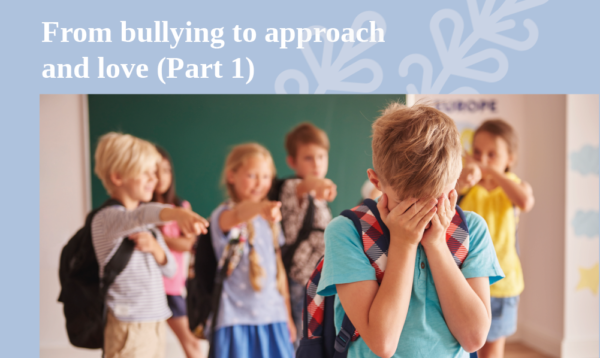School bullying is an issue that has been particularly topical in recent times and has provoked a variety of strong reactions. While bullying at school is not a new phenomenon either for domestic reality, particular scientific attention has been received in recent decades. Several surveys in various countries worldwide have shown the existence of bullying to a lesser or greater extent in the school context. Many opinions are expressed about the causes of this phenomenon and how our society should deal with it.
Definition-Types of School Bullying
School bullying is defined as aggressive behavior that is deliberate, unprovoked, and repetitive, constitutes an abuse of power, and involves inequality in objective (e.g., physical) or perceived (e.g., personality). In short, it is directed towards victims perceived by the perpetrators (one or many together) as weak, physically or psychologically. The different types of school bullying are distinguished by their main point of distinction, the form that violence receives from the abuser to the victim.
So, we have the following types:
(a) Intimidation with the main characteristic of physical violence. (Direct/ Physical Violence)
This type of bullying includes the victim’s physical injury, the attacker’s aggressive behavior with punches/kicks, and bad-willed pranks and teasing, leading to bodily damage.
b) Verbal Bullying (Direct/ Verbal Violence)
Often, the use of offensive language leads to the victim’s constant verbal harassment regarding his personal style of dress, hairdressing, physique, and intelligence.
c) Emotional Bullying (Indirect/Social Violence)
This type of school bullying often encounters the theft of personal objects, the spread of false and untrue rumors about the victim’s personality, his exclusion from activities and groups, and provocative verbal behavior with an offensive and disparaging way to the personality of the victim.
d) Electronic Bullying (Electronic Violence)
This type of bullying has developed mainly in recent years with the use of various social media. Its reference point is sending threatening/offensive messages via email or posting offensive comments or even photos on various social media (e.g., Facebook, forums, blogs, etc.)
Participants in incidents of bullying
In an incident of school bullying, some persons take a direct part in it, and third parties may be physically present (observers) or absent (the parents of the persons involved). Each member has its unique characteristics, which contribute to the occurrence of such incidents of school bullying.
The child who is bullied
The child who receives bullying is usually a “weak” child, physically or psychologically, with several insecurities and phobias. A child with reduced self-esteem cannot build up his personality and defend himself by raising his stature. He is a child who has not learned to speak for himself because older people usually respond instead and often underestimate and devalue him. Maybe he’s grown up in an overprotective environment listening to a lot of non’s, “Don’t do that,” “Don’t go there,” and “You can’t/don’t know how to do that, I’ll do it.” In general, school bullying victims are often insecure and lonely children with some apparent physical or mental differentiation. They usually belong to a minority group in the school context (e.g., ethnic, religious, physical appearance, some disability, etc.)
The child who bullies
A bully alternates between the roles of “perpetrator” and “victim” as he may grow up in a violent family environment accepting verbal and physical violence. He is a child whose integrity is continually violated, his wants are not respected, and he is not respected for what he is. So, he tries to gain acceptance and self-recognition by intimidating other “weak” children. That is, by mocking, disturbing, or hitting younger or physically weaker children, he regains the power and the prestige he needs. They usually justify their actions due to victims’ behaviors and rationalize them by minimizing the victim’s consequences.
It should be noted at this point that there are no children born ‘evil’ or with a propensity for violence, who want to hurt and insult other children out of malice. But there are certainly children with needs who are neglected and left unsatisfied. Thus the expression of aggression should be perceived as a last effort of these children to seek love, touch, embrace. It may seem oxymoron and strange how love and caring are sought with violent behaviors but indeed, these children want to communicate their desire/need even in the “wrong” way.
Observers
Third parties, often friends of the abuser or victim, teachers, or even random passers-by, are present in an incident of school bullying. The reaction of observers varies and is worthy of reference. Some observers support the abuser with laughter and applause or, on the other hand, walk away from the site and pretend to see nothing. Other children – observers feel victimized, terrified, “frozen,” or do not know how to react and prefer not to get involved. Finally, there are children – observers who try to help the victim, disapprove of the perpetrator, and run to get help.
To be continued…


